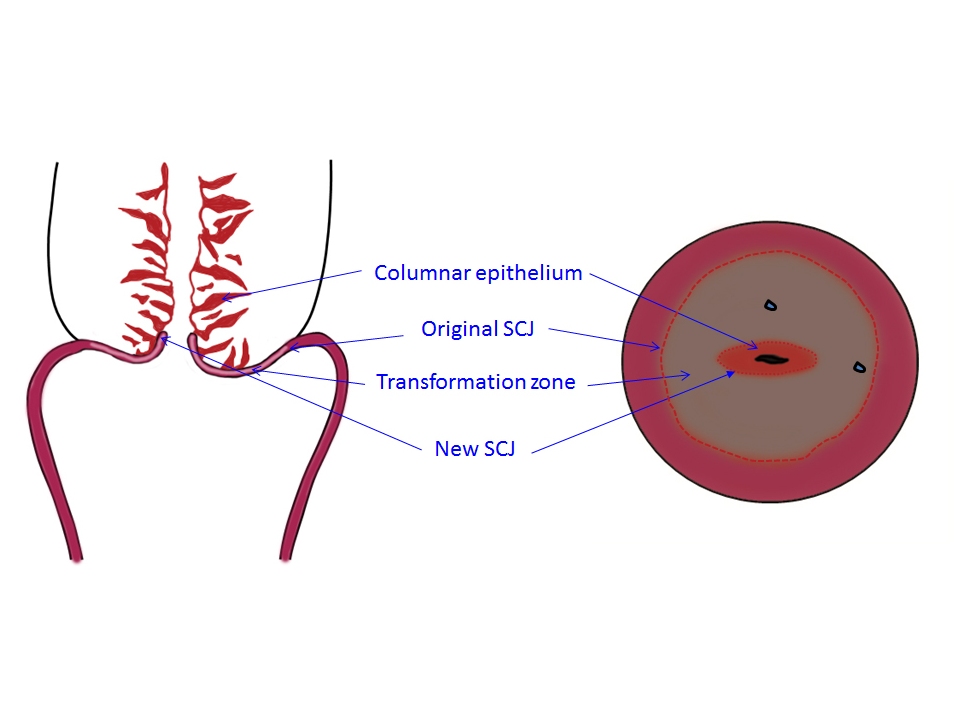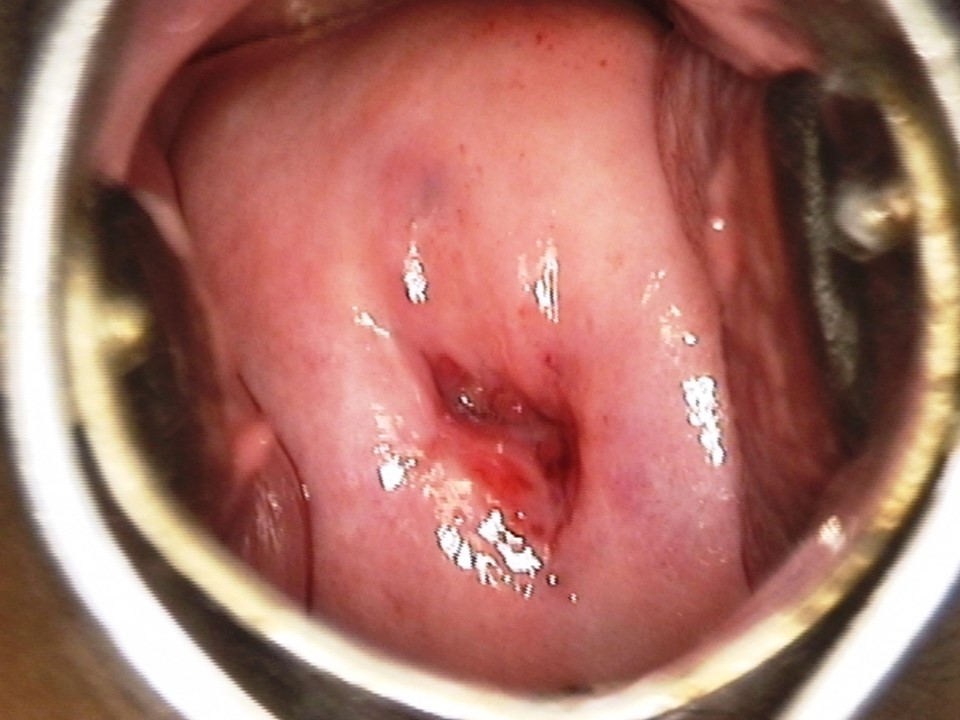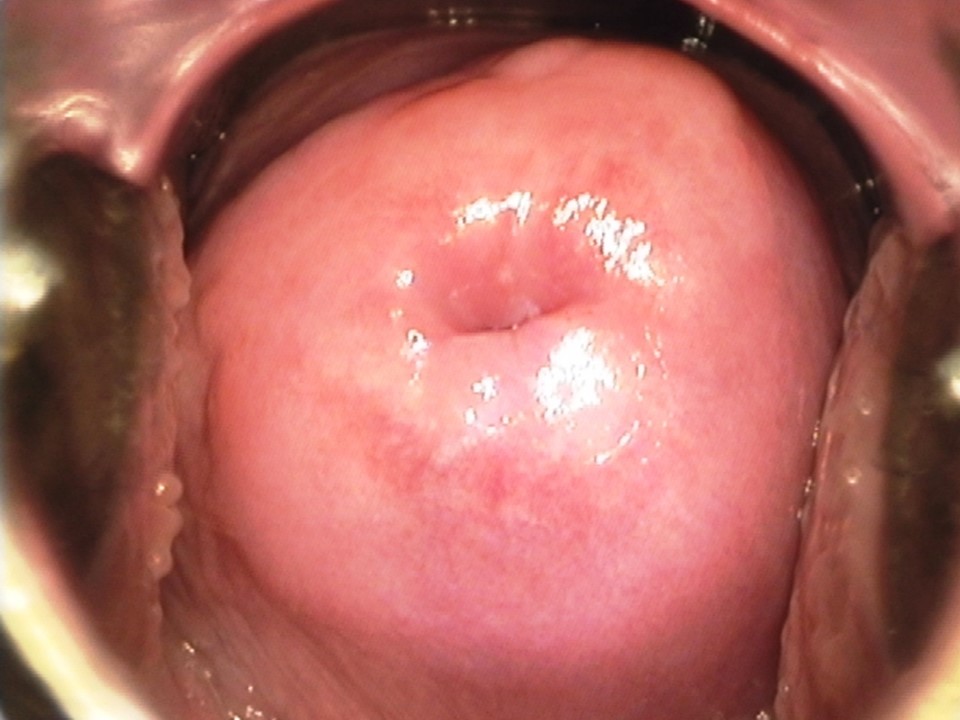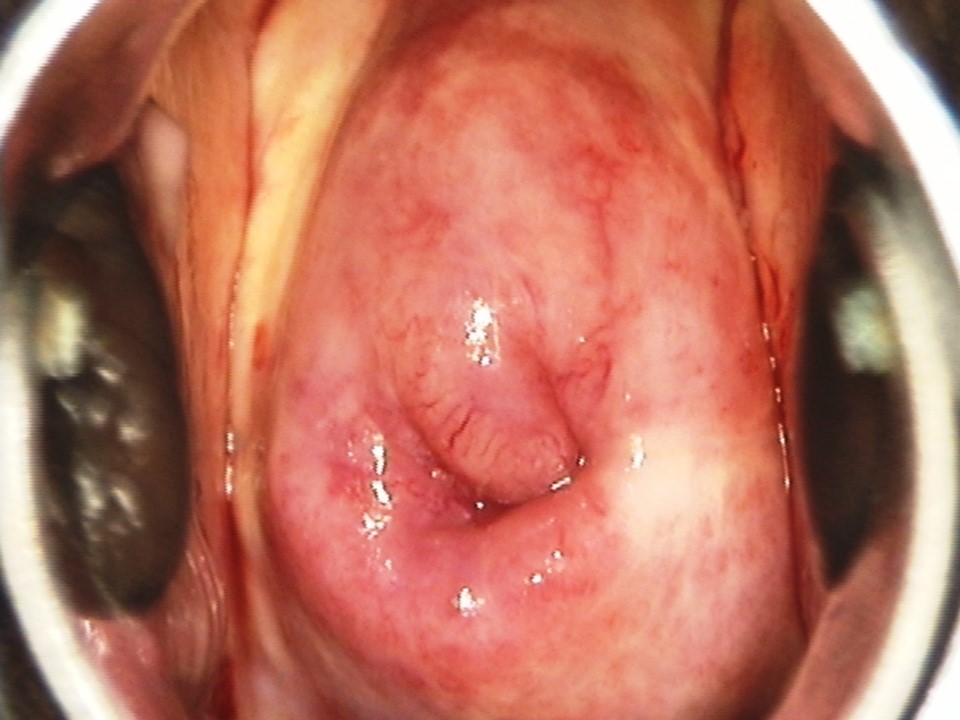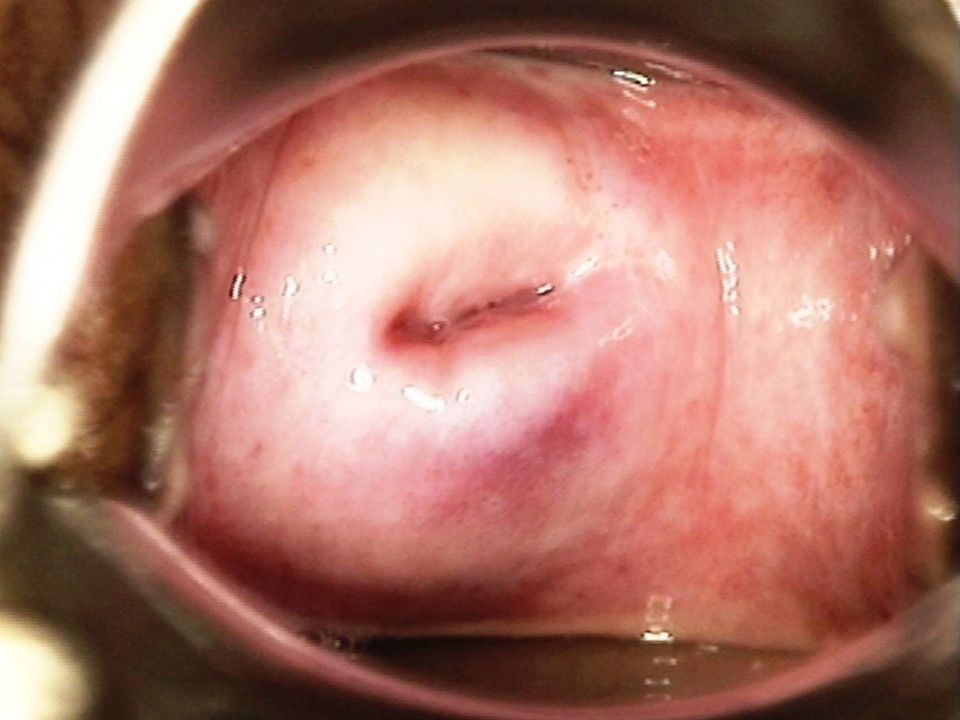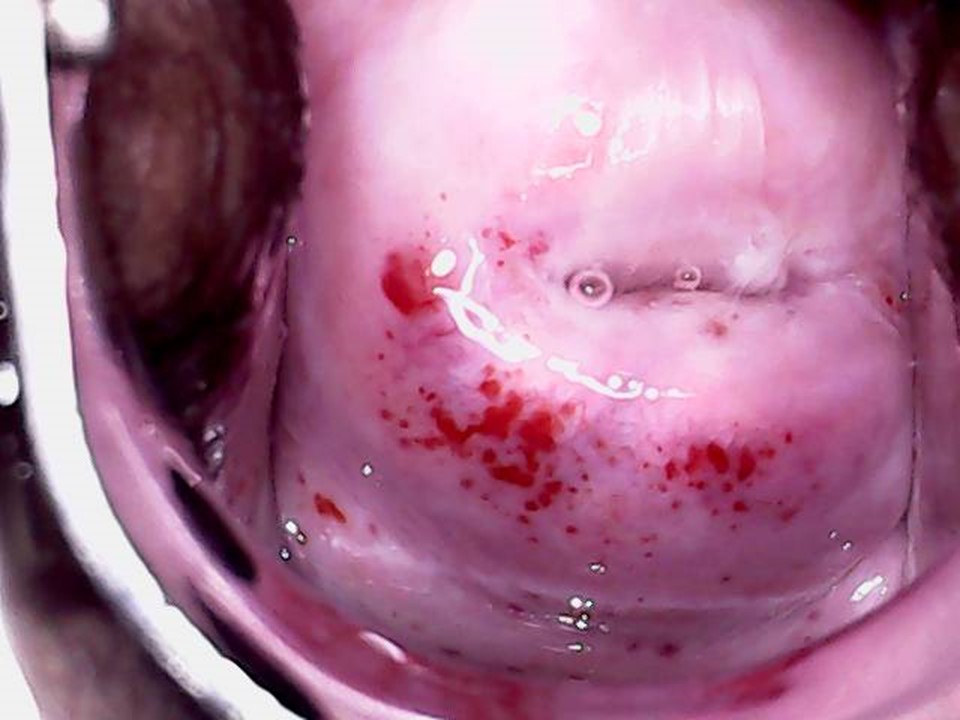Using Human Papillomavirus (HPV) detection tests for cervical cancer screening and managing HPV-positive women – a practical guide / Activity 2
Physiological changes of the cervical epithelium – Atrophic changes | Click on the pictures to magnify and display the legends |
With advancing age, the cervix shrinks because of waning levels of estrogen. This leads to a gradual shift of the SCJ into the endocervical canal. Thus, in a postmenopausal woman, the SCJ lies partially or completely inside the endocervix and is often difficult to fully visualize during the examination. With the shift of the SCJ, the TZ also shifts into the endocervical canal and is located partially or completely inside the canal. The atrophic epithelium appears pale pink. The stromal blood vessels are easily visible through the thin epithelium. The thin epithelium is easily prone to trauma, resulting in subepithelial haemorrhages. These patchy haemorrhages are visible as multiple tiny red spots on the ectocervix and are known as petechial haemorrhagic spots. Microscopically, the atrophic epithelium lacks the superficial and intermediate layers of cells, and as a result contains little or no glycogen. The next section discusses a physiological change of the cervix known as the congenital transformation zone. |
